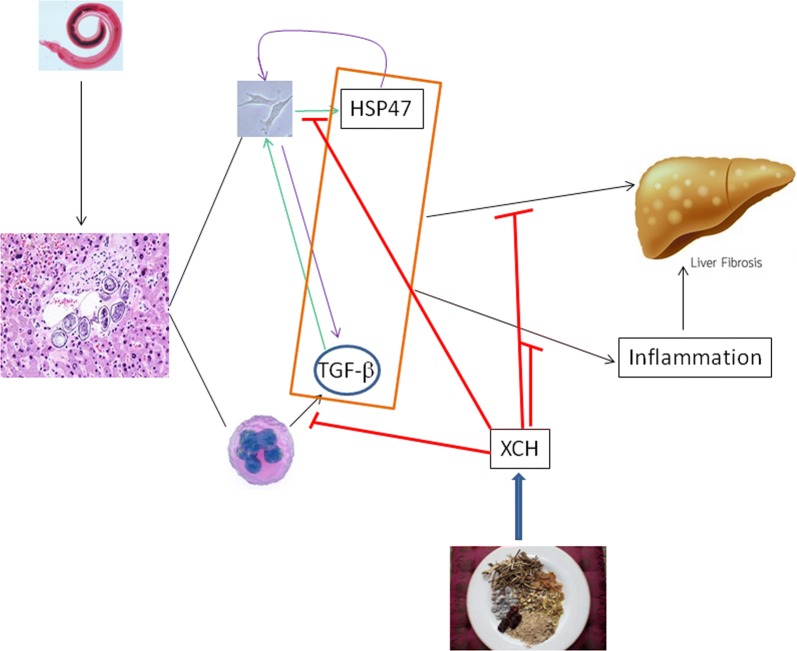- Record: found
- Abstract: found
- Article: found
Xiaochaihu decorction relieves liver fibrosis caused by Schistosoma japonicum infection via the HSP47/TGF-β pathway

Read this article at
Abstract
Background
Hepatic fibrosis caused by chronic infection with Schistosoma japonica remains a serious public health problem in the world. Symptoms include inflammation, liver granuloma and fibrosis, whilst treatment options are still limited. This study aims to investigate whether and how traditional Chinese medicine Xiaochaihu decoction (XCH) could mitigate liver fibrosis caused by S. japonicum infection.
Methods
BALB/c mice were infected with S. japonicum cercariae and treated with XCH for 16 weeks. Liver pathological changes were assessed by H&E and Masson staining. NIH3T3 and Raw264.7 cells were treated with S. japonicum egg antigens with or without XCH treatment. Quantitative real-time PCR, western blot, immunfluorescence and ELISA were performed to determine the changes of levels of fibrogenic markers.
Results
XCH protected mouse liver from injuries and fibrosis caused by S. japonicum infection and considerably reduced egg burden in a dose-dependent manner. Infection with S. japonicum caused elevation of serum ALT, AST, ALP, HA and PIIINP levels and reduction of ALB and GLOB levels, which was markedly suppressed by XCH. The upregulation of TGF-β1, Hsp47, α-SMA, Col1A1 and Col3A1 in S. japonicum-infected mouse liver was also significantly inhibited by XCH. Schistosoma japonicum egg antigens promoted the expression of Hsp47, TGF-β1, Timp-1, α-SMA, Col1A1 and Col3A1 in NIH3T3 cells, and TGF-β1, CTGF, IL-13, IL-17 and IL-6 in Raw264.7 cells, which was inhibited by XCH, LY2157299 and shRNA-Hsp47.
Related collections
Most cited references33
- Record: found
- Abstract: found
- Article: not found
Schistosomiasis

- Record: found
- Abstract: found
- Article: found
Effect of modulation of PPAR-γ activity on Kupffer cells M1/M2 polarization in the development of non-alcoholic fatty liver disease
- Record: found
- Abstract: found
- Article: not found
